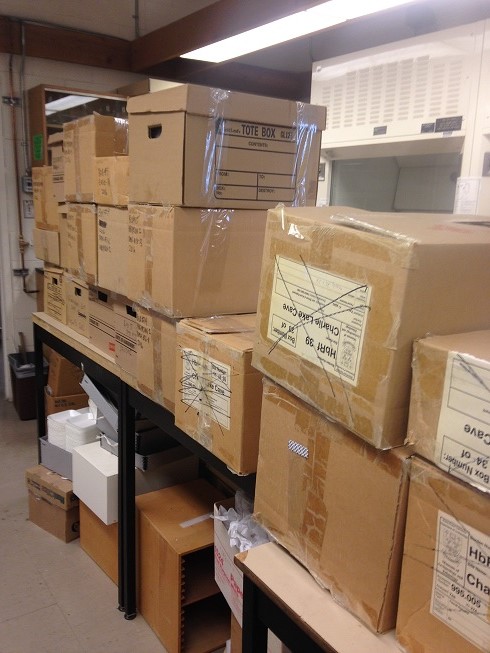When most people imagine an archaeologist, they may think of a person in full-khaki wear; with a safari-esque khaki hat, zip-off khaki pants, and a matching khaki vest with lots of pockets, in a deep hole lightly dusting of a pot sherd or a skull. Or they might think of our popular poster-people like Lara Croft or Indiana Jones. Well I’m sorry to say, or more accurately quite thrilled, that I am no Lara Croft and have never dusted away at a skull and don’t own anything khaki, though I do love to sport my zip-off pants and enjoy being in the field digging with my trowel.
I am another breed of archaeologist, the elusive archaeometrist. In their natural habitat – basements mostly as I’ve come to realize – lab archaeometrist hack away preparing and analyzing samples with a variety of microscopes, and analytical equipment, like mass spectrometers and Fourier Transform Infrared Spectroscopes (a new favourite of mine). If they are lucky enough, they get samples shipped to them from all around, and they can continue sonicating, magnifying, and analyzing samples, but sometimes they have to leave their basements to go dig in collections… in other basements.
Do you ever wonder, where all the archaeological material goes after its been dug up and analyzed? Well I have, and this summer I went undercover and saw it first hand. It all goes into labelled boxes and filled away, similar to the arc of the covenant at the end of the third Indiana Jones movie (I know… how stereotypical of me to make another Indi reference). My supervisor, Dr. Meghan Burchell, Anna Sparrow (a research assistant), and I, all went to British Columbia this summer and sifted (more archaeology puns) through the archaeological collections at Simon Fraser University and Royal British Columbia Museum. We sent back 50 bankers boxes full of shells, our archaeological material of choice, to Memorial, and it was great success.
What’s great about working from collections and not from fresh excavations is that there is seemingly endless possibilities of material to work on. Many of these collection repositories are full of sediment, bones, and other materials that most people will never look at again. These places are basically bursting at the seams and are in desperate need for relief not more intake. In some cases, material that could be helpful to students just ends up being thrown out and made into new archaeological sites with material from the Caribbean mixed with stuff from coastal British Columbia… hopefully no future archaeologists will try to figure that out.
It was a great opportunity to learn and experience the making of a collection that can yield many future studies and experiments. So if you’re interested in history and science but not into mosquitoes and camping for a month or more, maybe the lab archaeometry life at Memorial is right for you.
Until next time,
~Natasha
